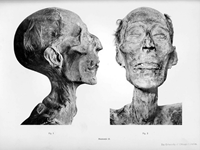Deep in the bowels of our galaxy, about 5,550 light-years away, an impressive light show is on display. This region has a large cluster structure, with multiple star clusters located close together. It contains at least three young star clusters with many hot, massive and bright stars. These young stars emit intense radiation that heats and energizes the cold gas clouds around them.
Astronomers call such cosmic structures “HII” (pronounced “H-two”) regions. An HII region is characterized by clouds of ionized hydrogen formed when strong radiation from young, hot stars strips electrons from surrounding neutral hydrogen atoms. Scientists study these regions with telescopes like @NASAChandraXray because young stars are very bright in X-rays. Moreover, X-rays pass through the dense clouds of gas and dust surrounding the stars, allowing astronomers to observe star formation processes in more detail.
This extraordinary image includes X-ray data from the Chandra X-ray Observatory and the ROSAT telescope (purple), infrared data from the Spitzer Space Telescope (orange) and optical data from the SuperCosmos Sky Survey conducted by the UK Infrared Telescope (blue).
Image description:
This region looks like drops of purple and blue paint layered between orange and blue lines. There is color almost everywhere, but the darkness of space can be seen at the outer edges of the image. Stars are scattered everywhere, most prominently three stars shining in an almost vertical line in the center of the image. Massive stars have bubbles or voids created by radiation and material blown from their surfaces.
Credit: X-ray: NASA/CXC/PSU/L. Townsley et al; Optical: UKIRT; Infrared: NASA/JPL-Caltech


 Nielawore
Nielawore









Yorum yazmak için lütfen giriş yapınız